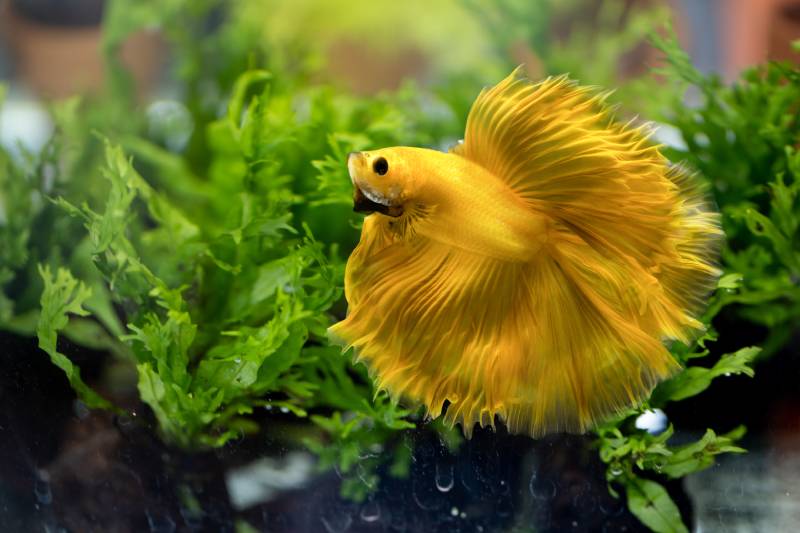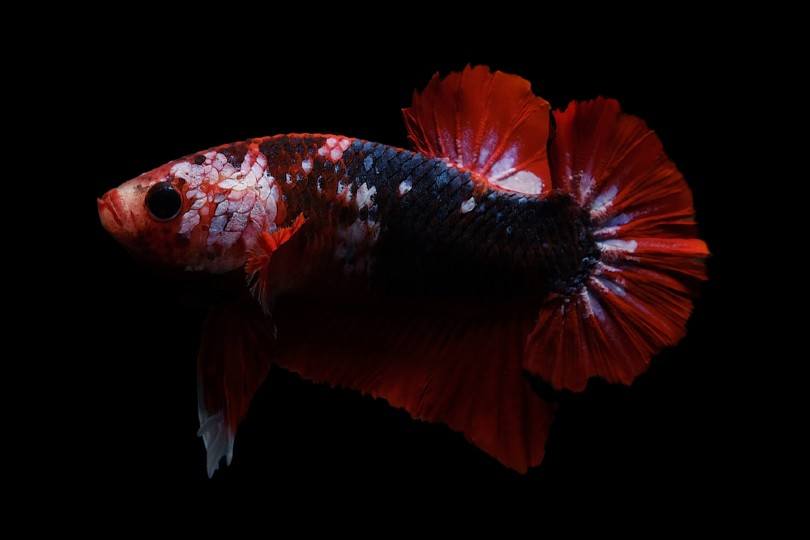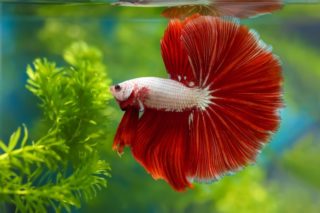Can Betta Fish and Goldfish Live Together? Fish Compatibility Explained By Our Vet
By Dr. Luqman Javed, DVM (Vet)
Updated on

Betta fish and goldfish are the two most popular and easy-to-find freshwater fish on the market. They’re both not just readily available, but they also sport beautiful markings, patterns, and colors. The high popularity of these fish often leads people to think they may make good tank mates.
Unfortunately, many people don’t consider or don’t understand the needs of these fish before bringing them home. It’s important to talk about whether or not Bettas and Goldfish can live together.
Can Bettas and Goldfish Live Together?
Goldfish and Betta fish should not be kept together in the same tank for several reasons.
Short-Term Risk: Injuries
On a short-term basis, the risk of housing a Betta and Goldfish together is the potential for injuries due to aggression or bullying. This can happen in several ways.
Male Bettas will often attack other fish that resemble Bettas, and it would be easy for a male Betta fish to confuse a fancy Goldfish with another male Betta. Many fancy variants of Goldfish (such as the Oranda, Rykuin, Telescope, and Ranchu) are colorful and have long, flowing fins. In this scenario, your fancy Goldfish may get injured. Generations of selective breeding to develop fancy Goldfish variants means that most aren’t particularly strong swimmers and might get bullied by a Betta.
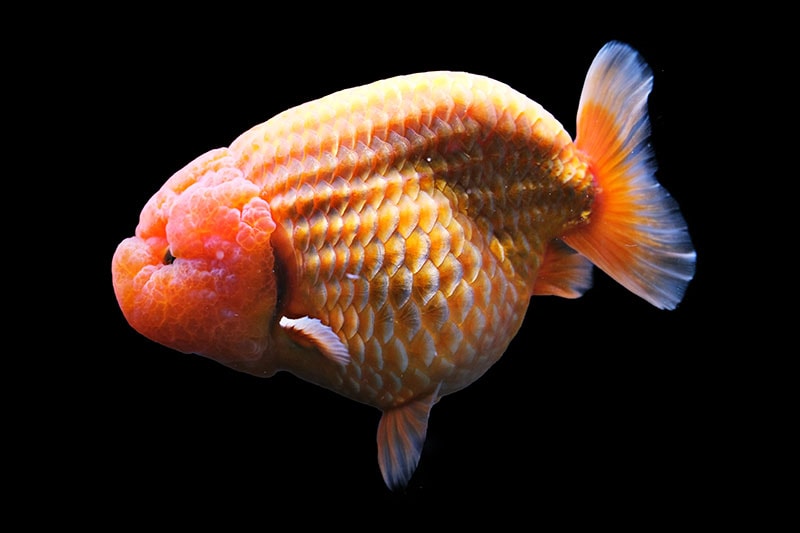
However, the risk isn’t just for the Goldfish. When housed with common Goldfish or Comet Goldfish (a variety often mislabeled as a common Goldfish), the Betta is usually the slow-swimming, vulnerable target that might get picked on and injured in the process. Unlike the fancy variants, common Goldfish are strong swimmers and grow much larger.
Warning: As an opportunistic feeder, a large common Goldfish might view a Betta as a snack!
Long-Term Risk: Different Water Requirements
The other big reason that the fish should not be kept together is that they have different water parameter requirements. Goldfish are cool-water fish that live longest when kept in cool environments. They can be kept in warm water, but it shortens their life expectancy. They also require heavy aeration, which is why they need cool water (as it holds more oxygen than warm water does).
Betta fish are true tropical fish that require warm water to thrive. If kept in water that is too cool, Betta fish become susceptible to diseases and usually live shortened lives.
Goldfish are heavy bioload producers, which means they add a large amount of waste to their environment. They require high filtration to ensure that water quality stays high. Being cold-blooded, their metabolism further increases in warmer temperatures, and in a warm aquarium, their bioload is exceptionally high.
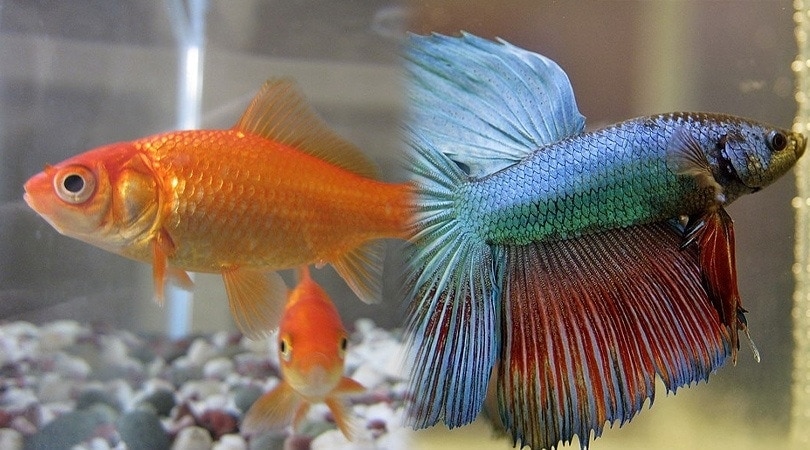
What’s the Best Tank Setup for Betta Fish?
Here are the minimal requirements that you should meet when setting up a tank for a Betta:
- A single male Betta should be housed in a 5-gallon aquarium (as a minimum).
- The aquarium needs a filter and a heater. It is best to keep your tank at a temperature of around 82–83°F (approximately 28°C).
- A gentle sponge filter is the best for Bettas. They don’t appreciate strong currents.
- The aquarium should be placed in a room that’s slightly cooler than the setting on your aquarium heater. This ensures that the heater keeps the temperature stable for your Betta and that they aren’t too warm (the heater won’t do anything if the ambient temperature exceeds its setting).
- The aquarium needs to be cycled before adding your Betta.
- Add decorations and plants that give your Bettas some hiding spots. Live plants are preferred over artificial plants. However, if you are not sure how to care for live plants, artificial silk plants are acceptable alternatives. Ornaments and decorations that you add to your aquarium should not have sharp edges or corners.
- Bettas appreciate plants with large leaves near the surface of the water, floating plants, or a fish hammock to rest on.
- If you enjoy watching Bettas constructing nests, you can purchase nest anchors for your fish. Betta nests are most sturdy at 82.4°F (28°C).
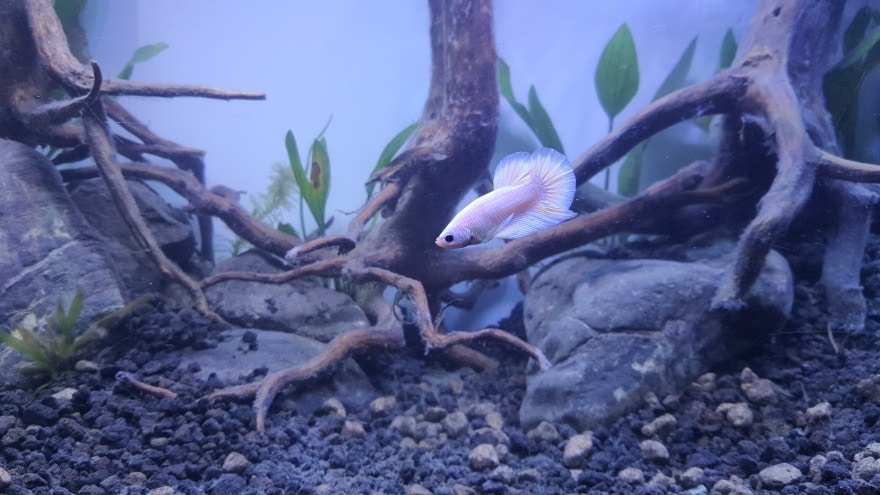
What’s the Best Tank Setup for Goldfish?
Goldfish are shoaling fish (they prefer each other’s company). The following tank sizes are recommended for Goldfish.
- A single Goldfish: 25 gallons (it is not advised to house them alone)
- Two Goldfish: 40 gallons
- Three Goldfish: 55 gallons
- Four and beyond: an additional 10 or 15 gallons per additional goldfish

- A single Goldfish: 55 gallons (it is not advised to house them alone)
- Two Goldfish: 75 gallons
- Three Goldfish: 90 gallons
- Four and beyond: an additional 30–40 gallons per fish (a small pond setup is best for a large group of common variants of Goldfish)
Goldfish are coolwater fish, so they prefer water in the cooler range. The ideal temperature for Goldfish, whether they’re kept indoors or outdoors, is 16–22°C (60.8–71.6°F). Fancy Goldfish have lower tolerances to changes in temperature and should be kept at 20–23°C (68–74°F).
Anything warmer than this can result in a shortened lifespan or susceptibility to disease if maintained for a long time. In nature, wild Goldfish cousins (carp) are exposed to cold temperatures in the winter; common Goldfish in ponds can tolerate water as cold as 32–40˚F (0–4.4˚C). The key to maintaining cold temperatures is preventing the water from freezing completely over, to ensure that oxygen continues to enter the water. This can be accomplished by checking that your pond is deep enough to not freeze entirely during the winter. Goldfish won’t survive if they’re frozen solid.
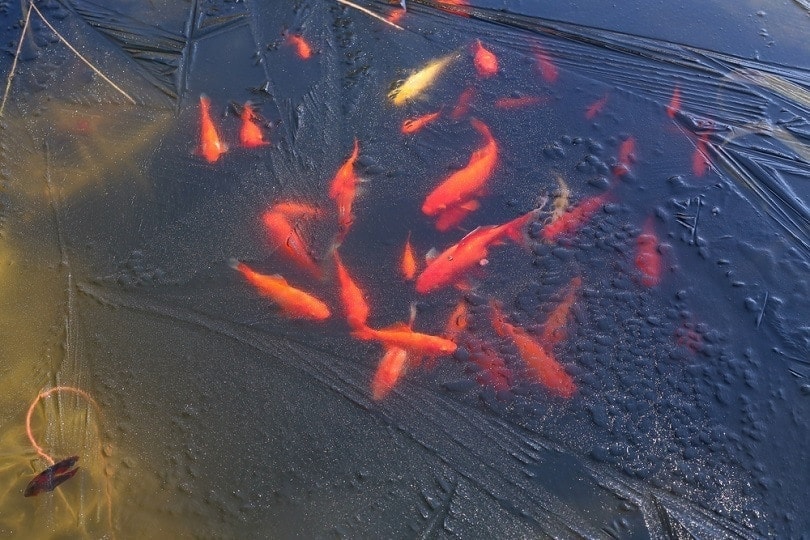
Goldfish appreciate a planted tank, but they are known for their love of eating and uprooting plants. You may have to devise creative solutions to keep live plants in your goldfish tank or limit your plant choices to a few hardy species only.
Live plants improve water quality and help enrich the environment for your Goldfish. Your goldfish will require heavy filtration, and it’s usually recommended to use a filter that is rated for a tank two to three times larger than the tank that your Goldfish live in.
Final Thoughts
Keeping Goldfish and Betta fish together is not advisable for the health of both fish. If you choose to keep a Betta fish and a Goldfish together in the same tank, you may end up with a bad situation where aggression or illness is occurring due to one or both of the fish being kept in an inappropriate and stressful environment.
If you want a Betta fish and a Goldfish, the best thing you can do for them is to set up two aquariums. This will allow you to curate both environments to the needs of each fish.
See also:
- Can Pleco and Betta Fish Live Together in the Same Tank?
- Can Angelfish and Betta Fish Live Together in the Same Tank?
Featured Image Credit: Pixabay



